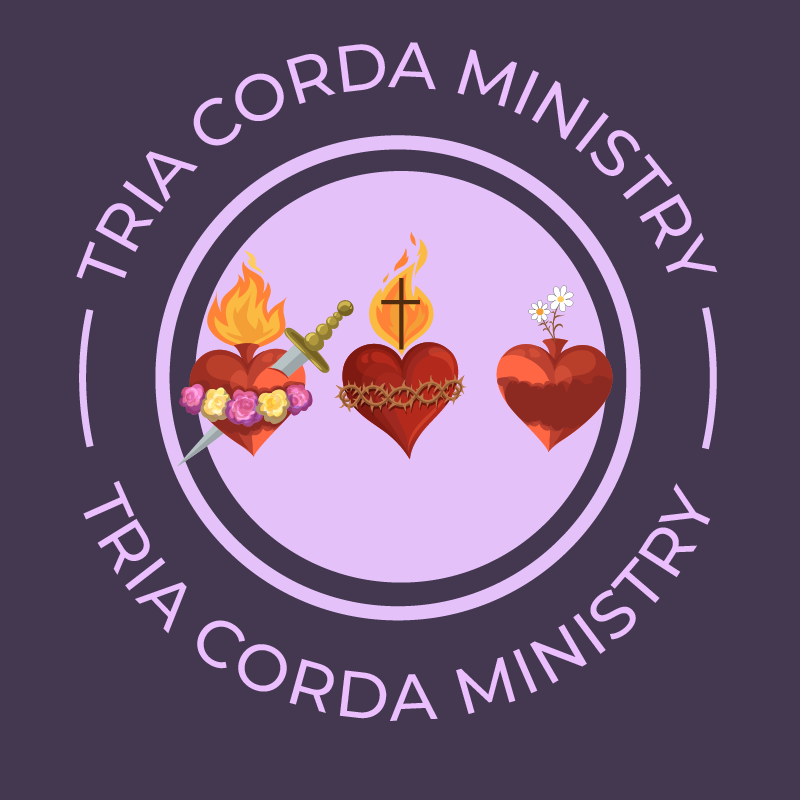Being Trauma-Informed: The Basics

This page may contain affiliate links. As an Amazon Associate I earn from qualifying purchases, at no extra cost to you. Thank you for your support of Tria Corda Ministry!
Being trauma-informed as a Catholic Church is one of the main goals of Tria Corda Ministry. In this section, we’ll discuss what being trauma-informed is, what it involves, the study of being trauma-informed, and its positive impacts on various types of organizations.
Before we begin, it is important to note that researchers are still debating the definition of trauma-informed and what it specifically involves. They are also investigating its effectiveness, though initial results are promising.
To date, none of this research has focused on these ideas in churches, especially from a Catholic perspective. Many of these ideas come from studies conducted in the justice system, mental health treatment centers, substance abuse treatment centers, and schools, among other settings. We are pulling principles from these studies to attempt to apply them to various areas of the Church.
The History
The term “trauma-informed” first emerged in the research literature in 2001 (What Happened to You? by Bruce Perry and Oprah Winfrey). Around this time, the ACE study and other research on the effects of trauma were catching steam, and people were beginning to better understand the high prevalence of trauma exposure and its potentially devastating effects (1). The idea of being trauma-informed emerged as researchers attempted to apply these findings in trauma research to serve people better.
Since its introduction into the research literature, researchers have tried to determine one set definition of what it means to be trauma-informed, as principles and definitions can vary widely. Researchers are also trying to determine the potential effects of being trauma-informed in more for-sure ways, although preliminary research has shown some promising potential positive effects (What Happened to You? By Bruce Perry and Oprah Winfrey)
A Definition
While definitions of being trauma-informed can vary widely, most definitions agree that when someone or an organization is trauma-informed, they have three things.
First, they understand the prevalence and potential impacts of trauma exposure and apply that knowledge to the design and delivery of their service, whether it be education, treatment, or activity.
Those who are trauma-informed also understand that behaviors that may be seen as disruptive or harmful, such as becoming anxious, running away, getting angry quickly, or others, may be a way of attempting to cope with trauma exposure. Those who are trauma-informed don’t look at those engaging in these behaviors and ask, “What’s wrong with you?” but instead think, “What might have happened to cause this behavior?” and can view that behavior as a coping mechanism that may have helped the person survive a horrible event or series of events, but it is not adaptive long-term.
Finally, those who are trauma-informed try to avoid retraumatization or triggering a trauma reaction through environments or behaviors that remind a person of their traumatic event (2)
What Being Trauma-Informed Involves
Typically, when we talk about being trauma-informed, we’re talking about an organization. Becoming trauma-informed as an organization can be a big undertaking that can involve training on:
- The effects of trauma
- The prevalence of trauma
- How to build trusting relationships
- How to spot potential impacts of trauma
- How to apply trauma-informed principles to your unique setting
- Places to refer people who may need to find healing from trauma
- How to teach positive coping skills.
The Positive Impacts of Being Trauma-Informed
Overall, preliminary research suggests that organizations that shift to trauma-informed practices are more likely to achieve their organizational goals.
For example, in mental health settings, treatments that are trauma-informed have been found to reduce symptoms and diagnoses more than normal treatments (3), keep people in treatment longer and be less likely to drop out prematurely (4), and improve responsiveness to therapy (5).
Additionally, schools that have implemented trauma-informed practices have had teachers who feel more able to help their students (6), have helped students boost their self-esteem more (7), and decrease the amount of discipline needed in the form of suspensions, expulsion, and referrals to the principal’s office (8).
Finally, researchers have found trauma-informed practices to benefit those served by an organization and those working in it. Implementing trauma-informed practices has been found to decrease emotional exhaustion (6) and stress (9) and increase staff satisfaction (10)
Why This Can Be Helpful For The Church
As we can see above, trauma-informed practices can improve the quality and impact of services and organizations (11). Additionally, trauma-informed practices can be beneficial by helping those who need treatment for trauma and its effects be recognized and referred.
For the Church, trauma-informed practices are also important to incorporate. Jesus is our healer, and He established the Church as a place of healing. Trauma-informed practices can help the Church to facilitate this healing through healing relationships, referrals to solid healing resources, and making the Church a welcoming place so that people are more inclined to stay and receive the graces offered.
Unfortunately, as I mentioned above, there hasn’t been any research or writing on applying these ideas in the Church. So, here at Tria Corda Ministry, we will strive to apply what we know from other studies of trauma-informed practices to the Church so we can continue to bring about Jesus’ healing mission. Please continue to this page to learn more about the principles of being trauma-informed and some ideas on how to apply them in the Church.
